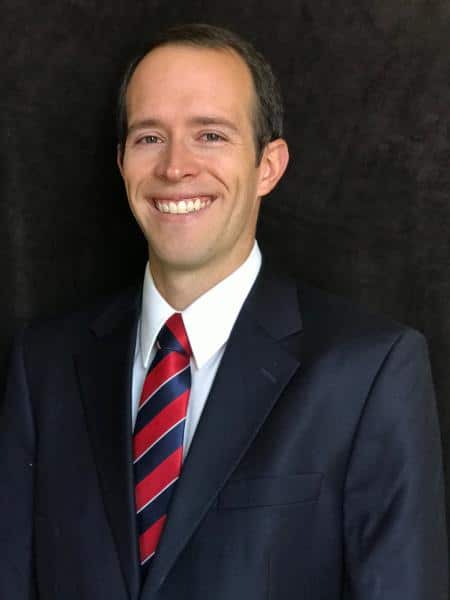Monday, June 28, 2021
2021 Cohen-Tucker Fellows Announced
ASEEES is delighted to announce the 2021 Stephen F. Cohen-Robert C. Tucker Dissertation Fellowship recipients. The Cohen–Tucker Dissertation Fellowship (CTDF) Program for Russian Historical Studies supports the next generation of US scholars to conduct their doctoral dissertation research in Russia. The CTDF Program is sponsored by the KAT Charitable Foundation, which we thank for its generous support.
2021 Cohen-Tucker Dissertation Research Fellows
Samuel Fajerstein, Indiana U – Bloomington
Jennifer Goetz, Columbia U
Luke Jeske, UNC Chapel Hill
Patrick Monson, Princeton U
James Nadel, Columbia U
2021 Cohen-Tucker Dissertation Completion Fellows
Dominick Lawton, UC Berkeley
James Nealy, Duke U
Svetlana Ter-Grigoryan, Ohio State U
Cohen-Tucker Dissertation Research Fellows
Samuel Fajerstein
History
Indiana U – Bloomington
“Between Cooperation and Contestation: Agricultural Interactions in the U.S.A. and U.S.S.R., 1917-1991”
Fajerstein’s project contends that agricultural relations between the Soviet Union and the US constitute one of the most significant pieces of the global developmental puzzle. Utilizing materials from archives in the US and Russia, the dissertation will examine these agricultural interactions from 1917-1991, identifying periods of heightened agricultural transfer and assessing each period for its domestic, international, and global significance. As each state examined and reacted to the other’s agricultural systems, transfers of policies and technologies forged paths across the globe that are perceivable today. From food storage technologies, to global grain prices, to fertilizer production, the current global food system was formed along the fine line between agricultural contestation and collaboration in the US and USSR.
Jennifer Goetz
History
Columbia U
“Developing Soviet Photography, 1937-1963”
Goetz’s dissertation examines photography as hobby and art in the Soviet Union. Despite prominence in the 1920s, by the late 1930s art photography existed on the margins of Soviet culture. Still, from 1945 until 1963 the Soviet state increasingly supported an amateur camera industry. Why did the postwar Stalinist state economically encourage private photography while discouraging state-regulated professional photography? Goetz’s hypothesis is that the Soviet state invested in the camera industry in response to a perceived growth in popular demand for amateur photography, as well as to competition with camera producers abroad. As photography became more accessible, it became, in the eyes of Soviet artists and critics, a less viable artistic medium. The state economic support for private photography supplied and trained the photographers who participated in the resurgence of public photography during the Thaw from 1953 to 1963, showing an important continuity between two periods.
Luke Jeske
History
UNC Chapel Hill
“Orthodox Pilgrimage and the Forging of Russian Identity, 1774-1914”
Jeske’s project examines the evolution of Russian Orthodox Christian pilgrimage to the Holy Lands, from the Treaty of Küçük Kaynarca in 1774 in which Ottomans granted Russians access to the Holy Lands, to the dissolution of pilgrimage networks ushered in by war in 1914. His analysis links pilgrimage to the constructions and rearrangements of imagined communities bound by religion, ethnicity, and empire. As pilgrimage evolved over the century, it brought together peasants and princes, monks and muzhiks animated by the same yearning for the Holy Lands and united by their experiences. He suggests they articulated a “Russianness” rooted in ethnicity and a cultural heritage particular to their empire but connected to the Orthodox peoples and places dispersed from the Balkans to the Red Sea. Jeske recovers notions of belonging fostered among Russians and foreign coreligionists, readers and writers, travelers and the home-bound. In showing how pilgrimage enabled ethnic Russian Orthodox Christians to articulate their own visions of modernity, he contributes to ongoing revisions of the history of Russian Empire.
Patrick Monson
History
Princeton U
“The Multiple Meanings of Legal Pluralism in Imperial Russia’s Baltic Provinces, 1860-1917”
This project analyzes the interplay of law and empire, metropole and periphery, through a study of legal reform in the Baltic provinces. Russia’s progressive judicial reform, announced in 1864, incited tensions over the issue of legal homogenization in the Baltics, where German elites controlled the legal system. In the 1860s and 1870s, some central officials, including Baltic Germans, enabled litigants and defendants to participate in court procedures in their native languages. In seeking to designate central judicial institutions as appellate instances, they perceived the supra-ethnic central government as a more impartial arbiter. Monson’s project examines why, in 1889, officials decided to assume responsibility for the interpretation and application of Baltic civil law. The project will explore how this arrangement resulted in Russian inflected interpretations of local law, or non-native pluralism. Since many of these jurists were highly educated and often proponents of individual rights, as well as belonging to various non-Russian ethnic groups, Monson’s research may contradict previous claims that they arbitrarily and incompetently interpreted Baltic civil law.
James Nadel
History
Columbia U
“Jewish Speculation: Russian Jews and Financial Investment in Late Imperial Russia, 1870-1917”
At the end of the nineteenth century, Jews made inroads into the Russian Empire’s financial sector, becoming a significant presence on the novel commodity and stock exchanges made necessary by industrial development. Also, urban migration spread Russian Jews across the wide expanse of the imperial domains, allowing their business relationships to form a crucial ligature in the long-distance circulation of capital throughout the Empire. Such economic networks of coreligionists served as both a solid foundation and a limiting constraint for Russian Jewish speculators living under the Tsarist regime, in which ascribed corporate identities determined social orders and where anti-Jewish legal restriction had intensified in the 1880s. Nadel’s dissertation follows these Russian Jews, who, while negotiating the power dynamics of minority life, adapted their commercial activities to the demands of financial capitalism and proved integral to the financial infrastructure of the largest land empire in the world.
2021 Cohen-Tucker Dissertation Completion Fellows
Dominick Lawton
Slavic Languages and Literatures
UC Berkeley
“Revolts of Things: The Poetics of Materialism in Russian Revolutionary Literature, 1909-1939”
Lawton’s dissertation provides a critical history of how industrial development and economic construction, as refracted through Bolshevik materialist ideology, shaped the aesthetics of early Soviet literature. Lawton’s project investigates how writers gave shape to new “Soviet objects,” industrial products which would resist commodification. Amid the violent ruptures that the early twentieth century brought to Russia, even simple things were artistically represented as containing the basis for a revolutionary transformation of modernity. Through interpretations of four major writers of various styles and backgrounds, Lawton traces how early Soviet literary aesthetics arose from, and intervened in, the attempt to construct a new, anti-capitalist industrial modernity. The authors’ work anticipates many of the concerns of the current “new materialist” turn in the humanities and social sciences. Lawton’s project offers a revitalized history of early Soviet literature from the standpoint of its materialist poetics.
James Nealy
History
Duke U
“The Shchekino Method: Socialist Modernity and Labor, 1960s-1980s”
As the Cold War transformed into a struggle centering on socioeconomic factors, the Soviet Union sought to improve economic efficiency. One manifestation of this change was the “Shchekino Method,” a constellation of factory-level managerial and organizational strategies that resembled tactics typically associated with capitalist systems. Tracing the Shchekino Method from its origins through its dispersal across the Soviet Union, the dissertation challenges the “stagnation” trope in contemporary historiography of the Soviet Union and instead examines the Soviet system’s capacity to change. In doing so, it seeks to place the history of Soviet labor into conversation with that of Europe, the United States, and Japan.
Svetlana Ter-Grigoryan
History
Ohio State U
“There is No Sex in the USSR”: Sex, Soviet Identity, and Glasnost, 1986-1991”
This dissertation explores why sex so captured the interest of Soviet people during perestroika (1986-1991). Between 1986 and 1991, Soviet researchers unearthed realities that the state had long concealed, such as rampant prostitution, sexually transmitted disease (STDs), and high rates of sexual violence. Disillusioned with these harrowing new statistics and political stagnation, Soviet filmmakers, artists, and writers used sexuality as a mode of expression during these years. The conversations of reformers, researchers, and creatives revealed deep fissures in Soviet ideology and moral values. By utilizing discourse analysis, this historical study explores the intersection of sexuality, power, and the state in the perestroika-era USSR. I evaluate the context in which these debates existed and their impact on the revolution that led to the USSR’s collapse. Thus, this project addresses directly the Soviet experience with reform and collapse. It also addresses a previously unexplored aspect of Soviet history – the birth of Russia’s LGBT movement, made possible by glasnost. Most importantly, the dissertation demonstrates the importance of sexual revolutions as catalysts for change, solidifying sexuality studies alongside other modalities of historical study.







